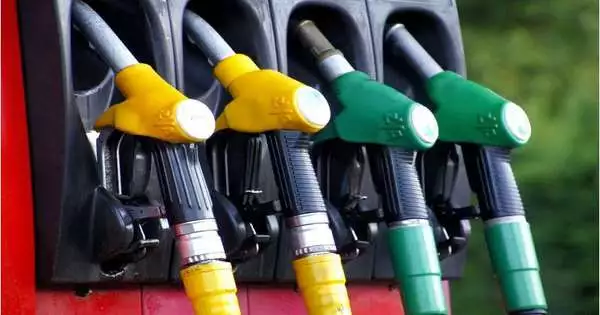Going green may result in higher costs when it comes to flying. Additionally, the plan won’t take off right away.
Sustainability was a hot topic this week at the Paris Air Show, the biggest aviation event in the world. The aviation industry is under more and more pressure to cut down on the greenhouse gases that airplanes release into the atmosphere.
Emissions-reduction strategies were applied to even the show’s large orders: According to airlines and manufacturers, the new planes will use less fuel than their predecessors.
However, the majority of those aircraft will utilize conventional kerosene-based jet fuel. Startups are frantically working on electric aircraft, but they won’t be as popular as electric cars.
Gernot Wagner, a climate economist at New York University, stated, “If you don’t have to lift it off the ground, it’s a lot easier to pack a heavy battery into a vehicle.”
“Sustainable aviation fuels have the greatest technological potential to decarbonize the aviation sector, but the main issue… is that they are not available,”
Dimitri Vergne, a senior policy officer at BEUC.
As a result, sustainable aviation fuel has emerged as the sector’s only hope of meeting its target of net zero emissions by 2050. Although aviation accounts for between 2% and 3% of global carbon emissions, its share is expected to rise as travel increases and other industries become more environmentally conscious.
However, sustainable fuel only makes up 0.1% of all jet fuel. SAF, which can be mixed with conventional jet fuel but costs a lot more, is made from things like used cooking oil and plant waste.
American Airlines vice president Molly Wilkinson stated at the air show that suppliers “will be able to kind of set the price.” Additionally, we are concerned that at that point, that cost will eventually be passed on to the passenger in the form of a ticket price.
Critics claim that airlines are exaggerating how quickly they can increase their use of SAF and making overly ambitious promises due to the limited supply. There are even skeptics in the sector. In a GE Aerospace survey, nearly one-third of aviation sustainability officers doubted that the industry would achieve its net zero goal by 2050.
Critics of Delta Air Lines are suing the airline in U.S. federal court, claiming that the company falsely claims to be the first carbon-neutral airline and that Delta’s claim is based largely on bogus carbon offsets. The airline based in Atlanta claims that the allegations have “no legal basis.”
BEUC, the French acronym for a consumer group, filed a complaint this week with the executive arm of the European Union, accusing 17 airlines of greenwashing.
The group claims that by encouraging customers to pay extra to help finance the development of SAF and offset future carbon emissions caused by flying, airlines are deceiving customers and violating rules regarding unfair commercial practices.
The group’s researchers discovered that Air France would charge up to $150 for the green option in one instance.
Dimitri Vergne, a senior policy officer at BEUC, stated, “Sustainable aviation fuels are indeed the biggest technological potential to decarbonize the aviation sector, but the main problem is that they are not available.”
Vergne continued, “We know that before the end of the next decade—at least—they won’t be available in massive quantities” and would not be the primary fuel source for aircraft.
Over its lifetime, SAF, according to its manufacturers, can cut greenhouse gas emissions by up to 80% when compared to conventional jet fuel.
For years, airlines have talked about going greener. They were shaken by the ascent of “flight disgracing,” a development that urges individuals to find less-dirty types of transportation—oor diminish travel by and large.
The issue acquired earnestness this year when European Association arbitrators settled on new guidelines expecting aircraft to utilize more maintainable fuel beginning in 2025 and rising strongly in later years.
Incentives, not mandates, are being promoted by the United States.
One of the tax credits for developing cleaner jet fuel will expire in just two years under a law signed by President Joe Biden last year. The executive of American Airlines, Wilkinson, stated that this was insufficient to entice sustainable fuel producers and recommended that the credit be extended for at least ten years.
The International Air Transport Association, a trade group for airlines, thinks that SAF could cut 65 percent of the emissions the industry needs to reach its net-zero goal by 2050.
However, due to the limited supply and infrastructure, only a small number of flights are powered by SAF.
President Emmanuel Macron made the announcement just before the start of the Paris Air Show that France would invest 200 million euros, or $218 million, in a plant that would produce SAF and cost one billion euros, or 1.1 billion dollars.
Investments in SAF producers like World Energy, which has a plant in Paramount, California, and Neste, which is based in Finland, have been promoted by numerous airlines.
Joined Aircraft intends to significantly increase its utilization of SAF this year to 10 million gallons, yet it consumed 3.6 billion gallons of fuel the year before.
There are those who see sustainable fuel as a way to get to cleaner technologies like larger electric planes or hydrogen-powered aircraft. However, a significant advancement in battery technology would be required to pack enough power to run a large electric plane.
Hydrogen should be chilled and put away someplace; it couldn’t be conveyed in that frame of mind on the present planes, as fly fuel is.
“It sounds like a good idea to use hydrogen. At the Paris Air Show, AeroDynamic Advisory’s Richard Aboulafia stated, “The problem is the more you look into the details, the more you realize it’s an engineering challenge as well as an economic challenge.” It is possible, but it won’t happen for several decades.





